Are there any prospects for the "flying party" CP-10?
The CP-10 jet training aircraft was created by the KB SAT team (“Modern aviation technologies"). SR-10 stands for "jet aircraft minus ten." According to the developers, it is designed to train pilots and participate in various competitions in air sports. The aircraft is able to perform aerobatics with a maximum overload of +8 to –6 g. The aerodynamic configuration of the CP-10 allows the pilot to perform aerobatics using elements of super-maneuverability that are characteristic of fighters of the 4th and 4th generation.
The double cabin CP-10 was designed according to the tandem scheme, it is equipped with ejection seats of the class “0-0”, which ensures the safety of a two-person crew throughout the entire speed range and piloting heights. Due to the widespread use of modern composite materials in the airframe construction, designers managed to significantly reduce its weight and increase the service life.
On assurances of the official site of SAT CB, compared with the aircraft analogues of their CP-10, it has the following advantages:
- crew cabin provides the most comfortable working conditions;
- ease of operation due to the presence of built-in system diagnostics systems;
- The aerodynamic scheme used allows pilots to safely perform any aerobatic maneuvers.
СР-10 was designed and built by the Modern Aviation Technologies Design Bureau (SAT Design Bureau) - a private company that was previously engaged in repairing and upgrading the existing fleet of Czech training aircraft L-39 Albatros, which are in service with flight training institutions of the aerospace system Russia. Their release at the Czech factory Aero Vodochody was stopped back in 1999 year. It was this fact that at one time pushed specialists of SAT Design Bureau to develop an aircraft that would replace the “flying party” of Czech production.
The project manager of the CP-10 training aircraft, Maxim Mironov, notes that the development of the aircraft has become an initiative project of the design bureau. At the same time, the work immediately received the status of a decision of the Ministry of Defense of Russia “On the order of development, mass production and supply of CP-10”. In flight schools at the present time there are still at least two hundred "Albatros", which were acquired in the years of the Soviet Union. It is unlikely to update the fleet of airplanes due to the sanctions policy of the Western countries towards Russia. Therefore, there is practically no alternative to the CP-10, Mironov said.
According to its concept, the new training aircraft differs little from the Czech L-39: a minimum of onboard equipment and the most simplified design. But the main feature of the Russian development is the use of a wing with a backward sweep. For the first time in the domestic aircraft industry it was used on an experimental fighter Su-47 "Berkut". Then the designers distinguished the following features of such an aircraft: excellent aerodynamics, even at low flight speeds, which is typical of aircraft with a forward swept wing; Another advantage was the excellent lifting force, which is superior to that of all aircraft with a wing of a classic design. In addition, the deployed wing can improve the controllability of the aircraft during takeoff and landing. Significantly reduced the likelihood of departure of the aircraft in the dead tailspin. Also provides excellent centering of the fuselage. Since the power elements of the CP-10 wing are shifted towards the tail, and in the central compartment there is a space for placing ammunition.
Through the use of this aerodynamic scheme, the CP-10 actually became a reduced copy of the Su-47 with comparable flight capabilities. For this, some even nicknamed the new aircraft "Golden Eagle", by analogy with a more powerful and adult machine. At the same time, compared to the L-39 Albatros, the CP-10 already has a two or threefold advantage in aerodynamics. The characteristics of this aircraft comply with the requirements for training aircraft of the 4 + generation, and this, for example, is more technologically advanced and difficult to manufacture in the Yak-130. During the demonstration flight at the MAKS-2017, the CP-10 aircraft demonstrated a good climb rate. He also performed a turn with an angle of 80 degrees, a battle eight. Actually, he demonstrated the minimum necessary for mastering the basics of piloting a jet plane.
The CP-10 training aircraft is equipped with the AI-25 engine similar to the “Albatross”, but modified. The choice of this engine was due solely to considerations of economy. These engines have accumulated a fairly large amount, which allows them to be used in the construction of the new aircraft without much monetary costs. In CB "SAT" they emphasize that in case of concluding a contract with the Ministry of Defense, they are ready to offer the military a more advanced version of their aircraft with the AL-55 engine of NPO Saturn. This engine was specially created for installation on training machines. It can be additionally equipped with an afterburner and thrust vector control system. This solution can also make an air acrobat from the CP-10 aircraft. The installation of the AL-55 on the CP-10 has already been agreed with the engine manufacturer. In this case, the characteristics of the aircraft will grow both in flight and in economic indicators.
“The CP-10 aircraft will allow for the implementation of a three-stage training system for pilots of the Russian Aerospace Forces. Currently, it is planned that the initial flight training - taking off and landing, orientation in space - cadets of Russian flight schools will work on the new Yak-152 propeller aircraft, which is created by Irkut Corporation. Then they will gradually be transplanted to the CP-10 jet, and only then to the most difficult - the combat Yak-130, ”said Vadim Kozyulin, a professor at the Academy of Military Sciences. According to him, at present, training of pilots is actually going on these planes, which is quite difficult for them, given the adaptability of the Yak-130, and quite expensive. Two jet engines are installed on the Yak-130, for this reason the cost of one flight hour on it significantly exceeds the similar indicators for the new promising Yak-152 and CP-10 aircraft.
It is reported that the release of CP-10 aircraft will be adjusted at the Smolensk Aviation Plant. According to the head of the company, Sergey Nikolsky, the plant is currently completing the process of upgrading production facilities for the production of new training aircraft. Here we are sure that the contract with the Russian Ministry of Defense will be signed in the near future. In this case, the deliveries of the first aircraft would have begun already in 14 months. It is planned that the first batch will consist of several dozen CP-10 airplanes, and over time, the Russian Aerospace Forces will completely replace at least the Albatross 150.
In this case, all aircraft with the aim of cheaper prices will be ordered in the most simplified configuration. According to Nikolsky, this is justified from the point of view of the future use of airplanes - primary flight training and the training of cadets in the skills of piloting an aircraft equipped with a jet engine. However, the use of new aircraft may be broader. There is a possibility that the new training machines will also be supplied to the combat units to support flight training by pilots of attack aircraft, fighters and even bombers. A similar practice of using Czechoslovak L-39 aircraft existed in the flight parts of the Soviet Union.
According to the Smolensk State TV and Radio Company, a trial batch of new CP-10 aircraft is already being prepared for release at the Smolensk Aviation Plant. The new machine has already passed the factory testing stage, currently the enterprise and a private aircraft manufacturing company are preparing to sign a contract for the supply of aircraft to the Russian Aerospace Force. According to the newspaper Izvestia, the Russian Aerospace Forces can receive the first batch of new CP-10 training aircraft by the end of 2018. According to the newspaper, the aircraft will be used along with the turboprop Yak-152 and jet Yak-130.
The CP-10 aircraft was created in a normal aerodynamic configuration with a high-flying backward-swept wing, single-fin vertical tail and all-round steering stabilizer. The machine is equipped with one turbojet engine. It is planned to install AI-25ТL engines on the first aircraft, which will be later replaced by more advanced AL-55I engines. Also, the aircraft will receive a "glass cabin", created by the Ryazan instrument factory (GRPZ). The maximum take-off weight of the aircraft will be 2,7 tons. The use of the backward sweep wing will provide the aircraft with a number of advantages compared to a conventional wing: firstly, the forward swept wing can significantly increase the aircraft’s maneuverability; secondly, the wing allows to reduce the radar visibility of the machine; thirdly, this wing allows to improve aerodynamic qualities. In addition, the forward swept wing greatly simplifies the process of piloting the machine at ultra-low flight speeds. However, in flight, such a wing is experiencing much greater loads compared to an ordinary wing; it is this deficiency that is the main difficulty in developing aircraft with a backward swept wing.
According to the project, CP-10, the full development of which is to be completed in 2017, will be able to reach speeds up to 900 km / h in flight, fly to a distance of 1,5 thousands of kilometers and perform various aerobatics in the air. The designers of the new training aircraft believe that for the development of the CP-10 pilots will have enough initial flight training on an Yak-52 class aircraft. At the same time, in terms of its flight performance, the CP-10 is far superior to the outdated Czech L-39 in speed, climb, radius of turn, maneuverability and, which is of great importance, the new aircraft is lighter than the Czech counterpart and wins in price-performance ratio.
Despite the rather positive reviews in the Russian press and on the aircraft, and its prospects for entering the Armed Forces of Russia in the very near future, there are quite a few people who still doubt this project. The main doubts are related to the fact that two ordinary enthusiasts, Maxim Mironov and Sergey Yushin, began to create the plane back in 2007, which established the SAT design bureau. Doubts are related to the design capabilities of the new design bureau, for which the CP-10 was the first aircraft designed. At the same time, in SAT, CB initially took up the implementation of a complex project, choosing the forward swept wing for the new aircraft.
The need for this aircraft for the VKS of Russia is also in doubt. The modern jet training aircraft of the VKS is already there - this is the Yak-130, which has already been successfully copied twice (Italian - Aermacchi M-346 and Chinese - Hongdu JL-10). In this case, the Yak-130, if necessary, can assume the role of a light attack aircraft and is able to carry up to three tons of combat load. In addition, the Yak-130 is a twin-engine, and therefore more reliable aircraft in terms of flight safety. The failure of one of its engines does not entail the loss of the aircraft. True, this medal has a downside, the single-engine CP-10 consumes much less fuel than the Yak-130, which means it is more economical to operate.
In any case, if the CP-10 is really adopted for the VKS, it will become the third Russian jet trainer after the Czech single-engine L-39 and the Yak-130 that will replace them. Taking into account the Yak-152 training aircraft that is being actively developed at the present time, which should become the first flying party in various flying clubs and in the VKS, the so-called initial flight training aircraft, the future of the CP-10 does not look so bright. Some experts believe that the expansion of the species diversity of training aircraft is unlikely to benefit the Russian armed forces.
Another reason for doubt is the scheme itself with a backward swept wing. And these doubts are based on the historical experience accumulated at the moment in the development of such aircraft. In particular, in Russia, the work carried out by the famous Sukhoi Design Bureau with the promising sea Su-27KM and the subsequent Su-47 "Berkut" ended in nothing. The American designers have not advanced in this direction either.
The designers of the CP-10 jet training aircraft themselves hope that their offspring will interest the Russian military as a transitional aircraft between the Yak-152 and the jet Yak-130. The latter is a rather large and complex twin-engine machine for its class, the transition to which the broad mass of cadets can be associated with certain difficulties. Also in CB "SAT" believe that their plane will be able to attract attention and athletes. In any case, who will be right, the designers of the young private design bureau or skeptics, we will know in the near future.
СР-10 waiting for MAKS (photo: Evgeny Lebedev) sandrermakoff.livejournal.com
Information sources:
https://tvzvezda.ru/news/opk/content/201707251045-60w2.htm
https://nplus1.ru/news/2017/07/24/sr10
http://www.airwar.ru/enc/other/sr10.html
http://www.kb-sat.ru
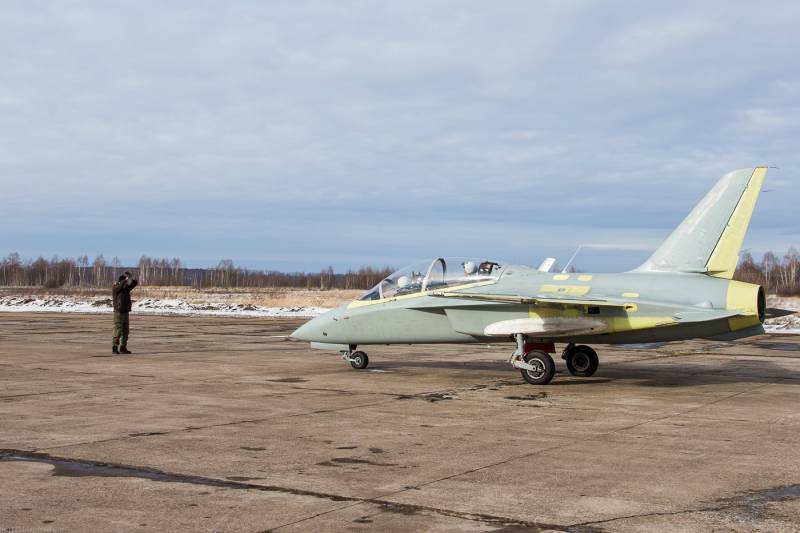
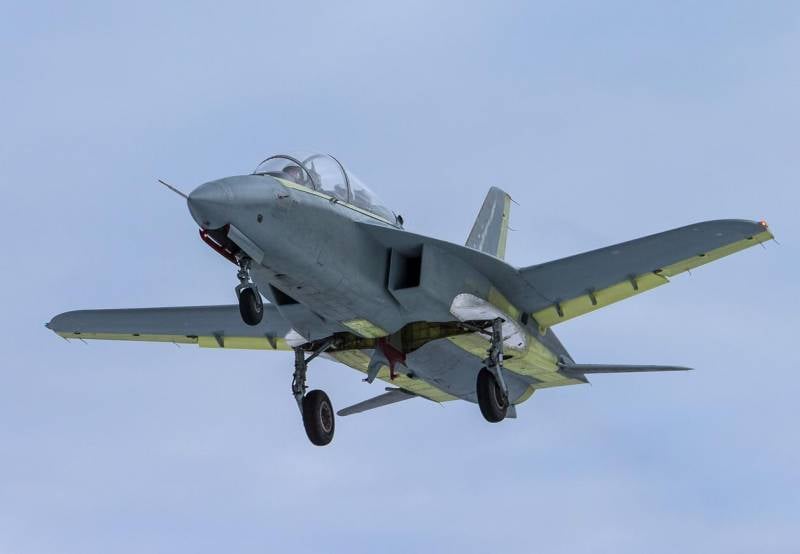
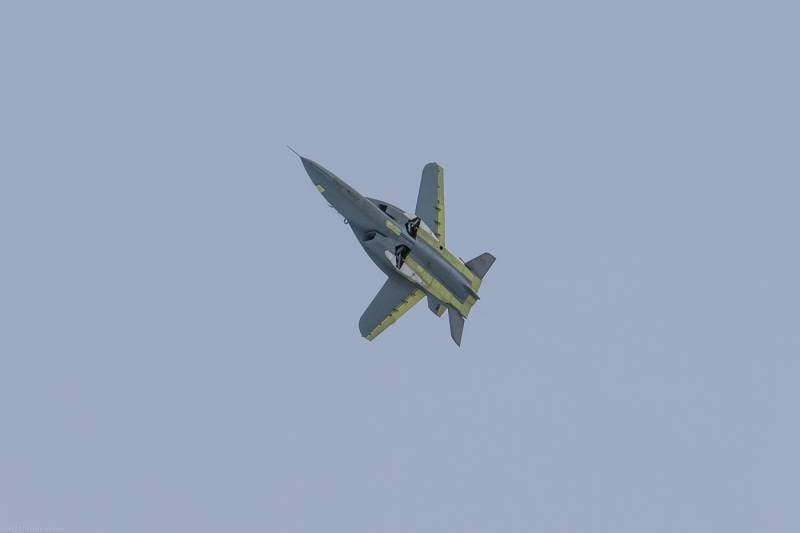
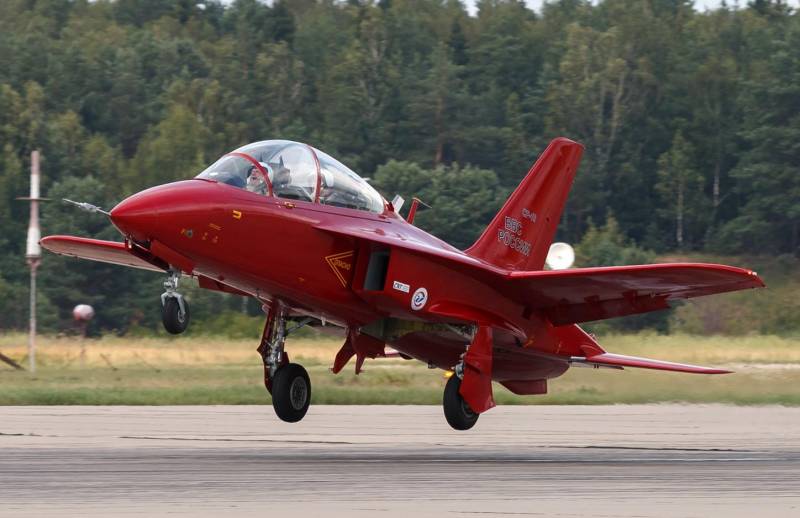
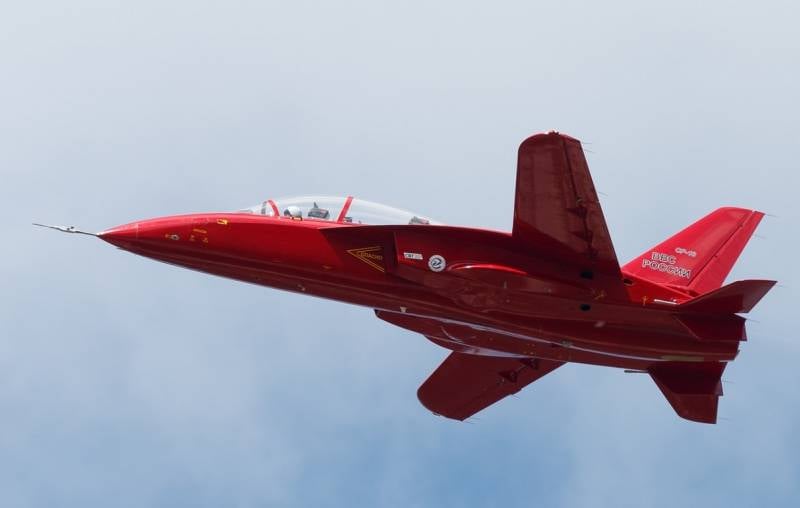
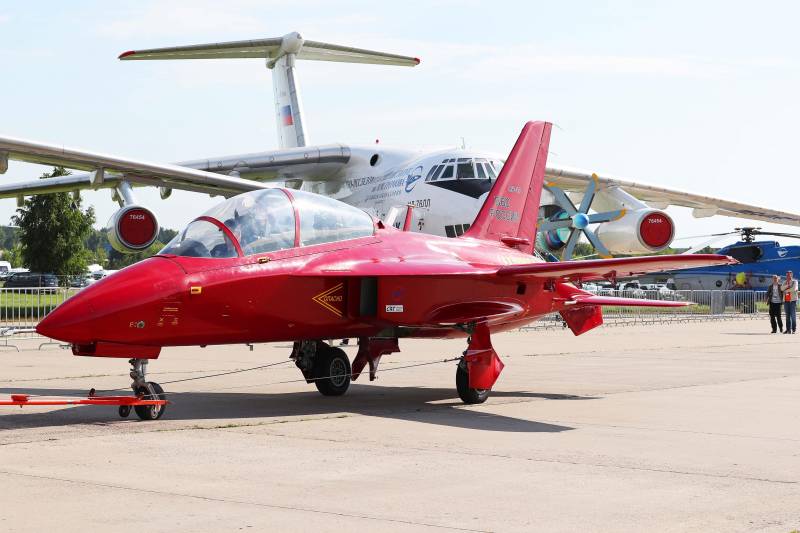
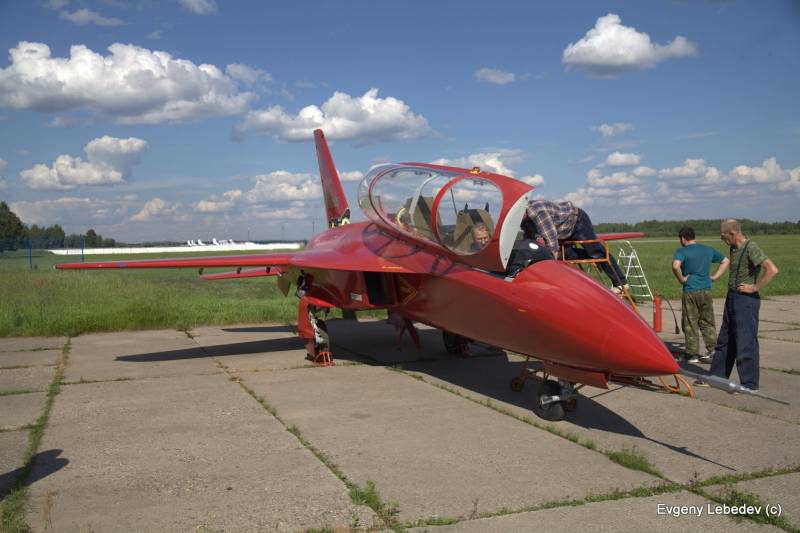
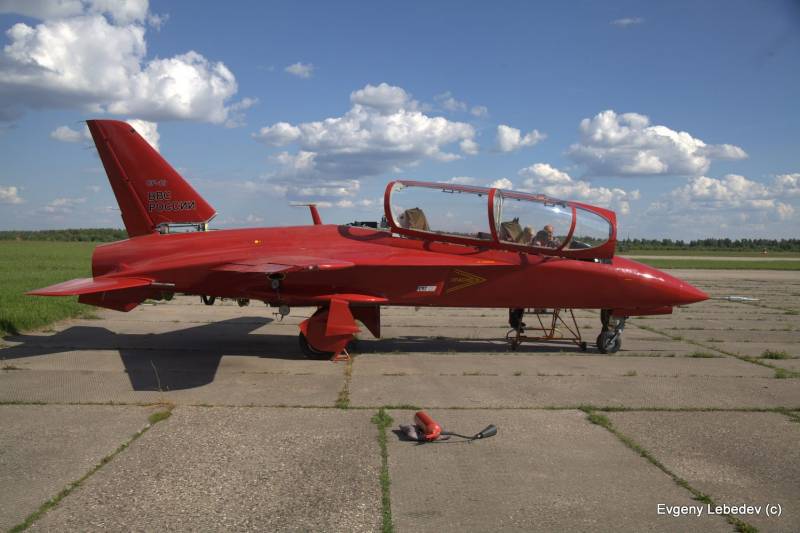
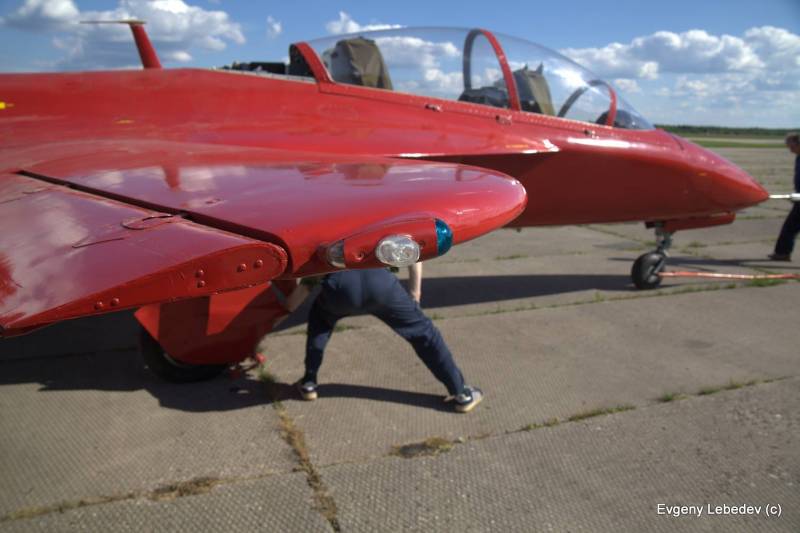
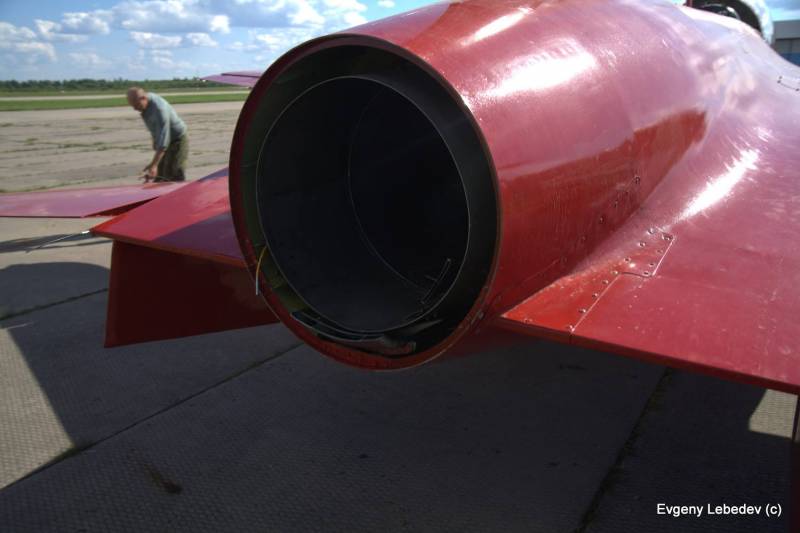
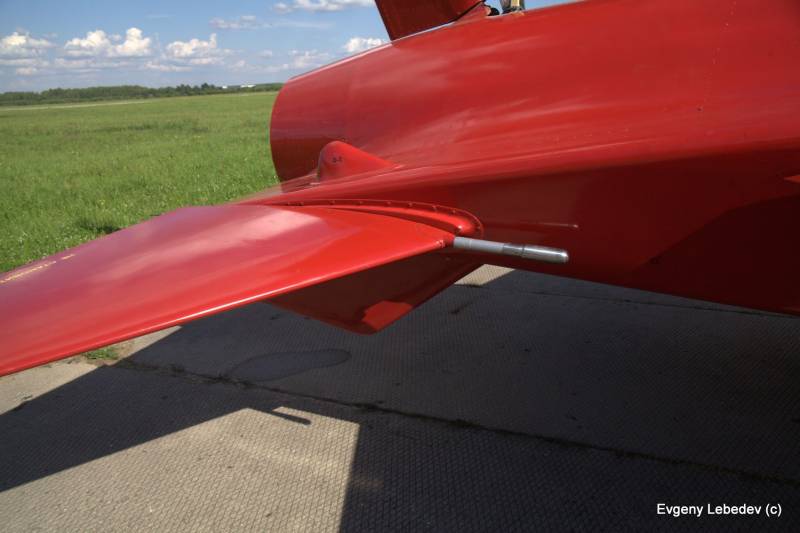
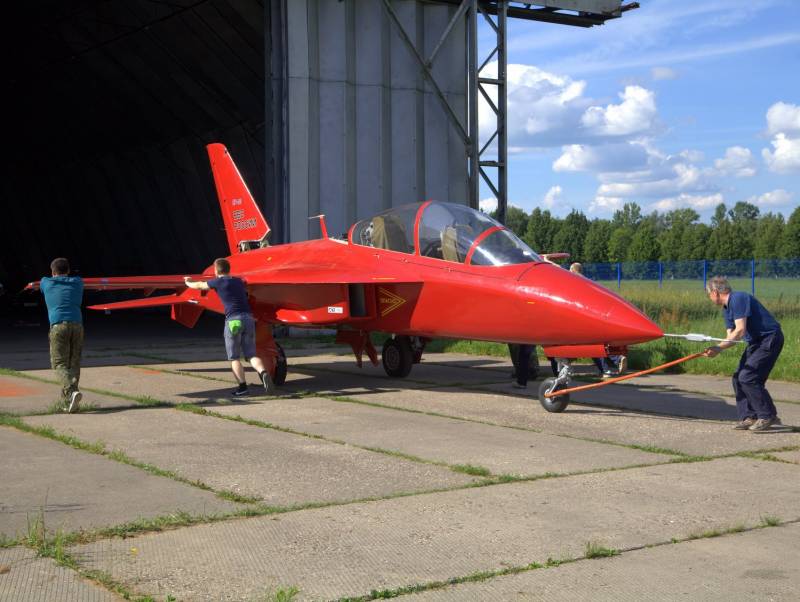
Information